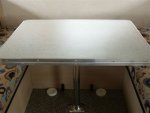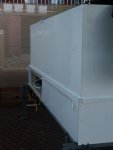arktrekker
Adventurer
I have been planning a build for a while now and have reached a point where I am considering materials for the exterior. Basically I am looking at building my own shell onto the back my F350. The plan so far is to go with a metal frame. I had given thought to covering it with a thing plywood, somewhere around 1/4-3/8 thick and then glue on the exterior covering like they use on motorhomes.
Today I was at a friends house and he had just bought a canoe. The previous owner had sprayed the wooden seats with bedliner at one of the places like line-x.
So the gears in my head started turning. Would it be possible to spray the exterior of a custom wood shell with something like this to create a waterproof shell? Any reasons why it would not work?
Today I was at a friends house and he had just bought a canoe. The previous owner had sprayed the wooden seats with bedliner at one of the places like line-x.
So the gears in my head started turning. Would it be possible to spray the exterior of a custom wood shell with something like this to create a waterproof shell? Any reasons why it would not work?



